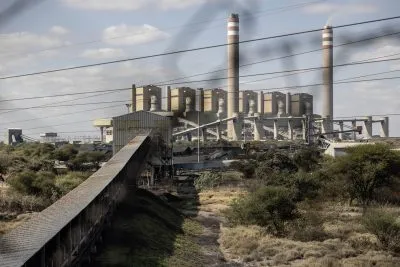Recently, in my conversations with investors and policy makers, I have been hearing a lot about energy efficiency in infrastructure, particularly when it comes to climate resilience alongside extreme weather events, which puts energy infrastructure at risk, and heightened geopolitical risk, which threatens energy security and independence.
I have found this fascinating because, for the past decade or so, renewables have been made out to be the panacea for energy independence, broad-based economic development and sustainability. This has certainly been the strategy of China, which has rolled out renewables at pace, while the rest of the world looks on in awe. But according to the International Energy Agency (IEA) the best approach alongside all the infrastructure solutions in the current environment, is actually energy efficiency.
There is no doubt that lowering record-high consumer bills and securing reliable access to supply is currently a central political and economic imperative for almost all governments. As such, the IEA believes that “focusing on energy efficiency action is the unambiguous first and best response to simultaneously meet affordability, supply security and climate goals”.
The agency reports that member countries which have implemented energy efficiency-related measures across the buildings, industry and transport sectors are estimated to be saving households and businesses around $680bn this year, or around 15% of the total 2022 energy bill of $4.5 trillion. With statistics like these, amidst the cost of living crisis and climate crisis, efficiency progress is gaining momentum and attracting investors’ attention.
But what exactly is meant by “energy efficiency”?
Jonathan Maxwell, CEO of Sustainable Development Capital LLP (SDCL) explains that “the world is currently wasting most of its energy, across the points of generation, transmission, distribution and end use. Solutions to this problem would save gigawatts of energy, and are badly and urgently needed. They could be delivered at scale with existing technology, at low cost and in time frames of six months to three years, compared with decades for other solutions.”
Maxwell explains that clean and renewable energy represents less than 20% of the energy system today and new supplies at utility scale will take years if not decades to develop, from whatever source.
“Major new offshore wind and other large-scale renewable generation ordered now can be expected from the late 2020s and the more controversial nuclear in the 2030s and 2040s. New natural gas capacity involves similar timeframes. In the meantime, while we build incrementally on renewable energy capacity, we are likely to see more – rather than less – coal and gas used to balance grids in Germany, Ireland and other European markets,” he says.
The multi-phase approach cohering in Europe alongside rolling out its landmark green deal, could be a game-changer if applied to the energy mix in sub-Saharan Africa, particularly its two major economies, Nigeria and South Africa, which both have less than 20% of their energy mix in renewables.
Moreover, South Africa is the world’s largest user of coal power. Energy efficient infrastructure on existing facilities could mitigate climate change and ensure resilience to extreme weather events, while renewables come on-stream. Needless to say, all renewable infrastructure should incorporate efficiency as a starting point.
Maxwell urges government policymakers and infrastructure investors to reduce energy demand at the point of use, as well as making supply and distribution more efficient.
He says: “We can do this with commercially proven technologies at scale that are readily available today, such as on-site cogeneration, solar and storage, renewable heat, bioenergy, green gas and hydrogen, efficient lighting, heating, cooling and controls. By reducing the ‘size of the cake’, rather than relying on the supply side alone, we can find gigawatts of energy demand reduction (or ‘negawatts”), reducing and removing costs and carbon while reinforcing resilience and energy security.”
For SDCL, the solution would be for governments to mandate immediate and annual reductions in energy consumption per unit of GDP output and pass obligations down both to the public and private sector, and that they should invest in project development and reduce credit risks for investors decarbonising private buildings and industry.
This article first appeared in Issue 11 of IC Intelligence Insights. Click to access the full publication.
Want to continue reading? Subscribe today.
You've read all your free articles for this month! Subscribe now to enjoy full access to our content.
Digital Monthly
£8.00 / month
Receive full unlimited access to our articles, opinions, podcasts and more.
Digital Yearly
£70.00 / year
Our best value offer - save £26 and gain access to all of our digital content for an entire year!

 Sign in with Google
Sign in with Google 



